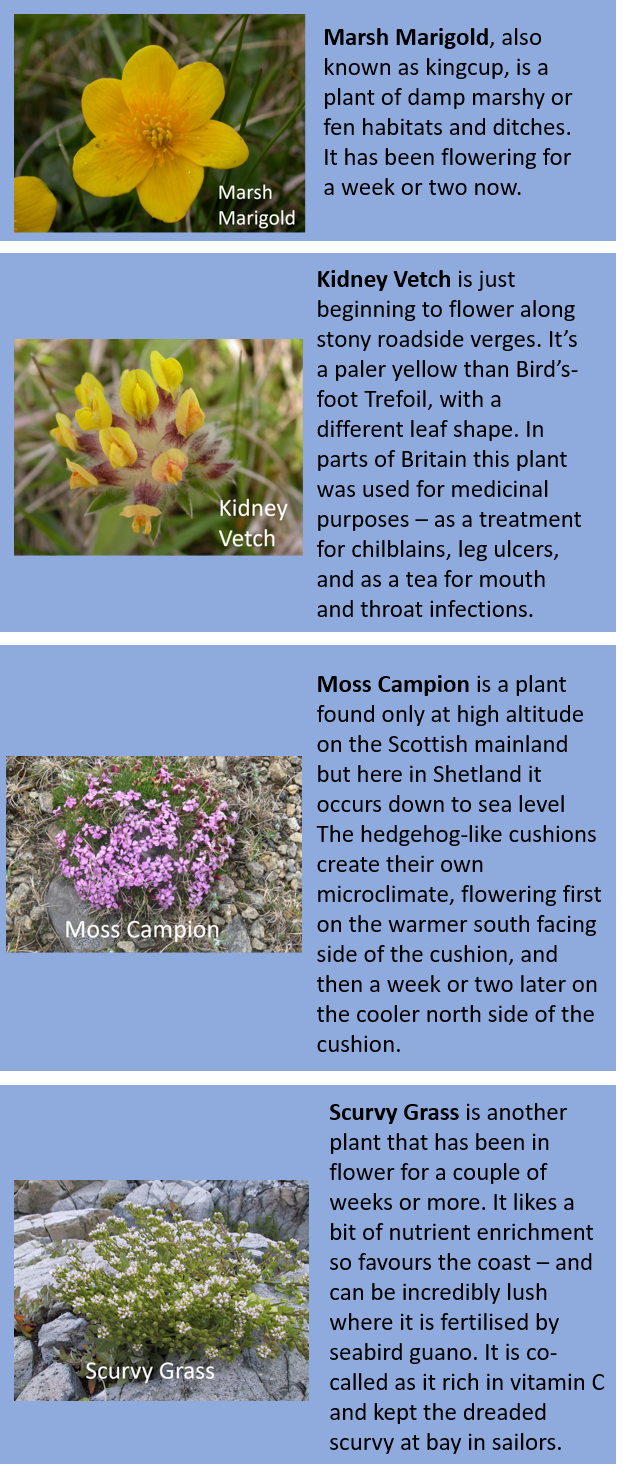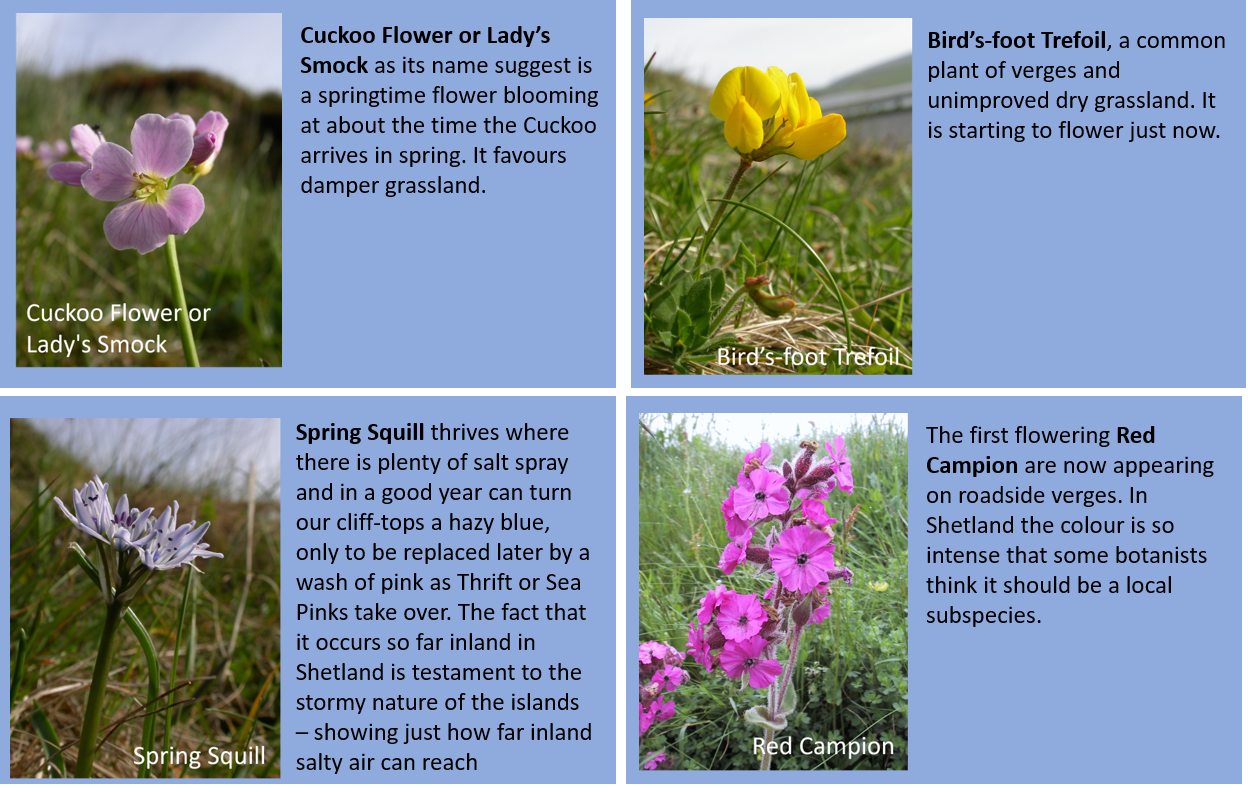What to look for this week - Wildflowers
Published: 19 May 2020
 Visitors to the islands often remind me how lucky we are to have such an abundance of wild flowers here in Shetland. Many of our road verges provide a great example of this as here plants, protected from sheep, can grow, flower and set seed before an autumn cut. Coasts and cliff tops are another great place to look for flowers but these require a bit of grazing to ensure that competitive grasses do not grow too tall and swamp the flowering plants. And of course, recent agri-environment schemes have rewarded more sensitive management of meadows and wetlands, leading to a profusion of flowers in places.
Visitors to the islands often remind me how lucky we are to have such an abundance of wild flowers here in Shetland. Many of our road verges provide a great example of this as here plants, protected from sheep, can grow, flower and set seed before an autumn cut. Coasts and cliff tops are another great place to look for flowers but these require a bit of grazing to ensure that competitive grasses do not grow too tall and swamp the flowering plants. And of course, recent agri-environment schemes have rewarded more sensitive management of meadows and wetlands, leading to a profusion of flowers in places.
Before we go any further have you ever stopped to wonder why plants flower at all? Flowers are generally either colourful or possess a scent and these are key in attracting insects. These insects come to feed on the pollen or nectar but in doing so transfer pollen from the male parts of the plant to the female parts of the same plant or another plant, which eventually leads to seed production and the next generation of plants. Many flowers rely on specific insect species for this process so it’s important that they flower when the insects they require to pollinate them are available and this may be one factor influencing flowering times. Woodland plants – and we have a few here in Shetland, presumably left over from the time when Shetland was at least partly covered in woody scrub – tend to flower early in the season before the woodland canopy closes. Annuals tend to flower later as they need a bit of time in spring/summer to get going.
Just now new flowers are appearing every day and if you have a bit of natural grassland in your garden or take a regular walk along a roadside verge as part of your lockdown exercise why not keep a list of the species you see. This information is valuable and if you can send this list with a grid reference to paul.harvey@shetlandamenity.org later in the summer, then it can be entered onto the Shetland Biological Records Centre database. Send a photograph of flowers that you can’t identify and we’ll do our best to tell you what they are. You can download the photos and descritpions in this blog here.

Paul Harvey, Natural Heritage Officer, Shetland Amenity Trust - May 2020
We hope you have enjoyed this blog.  We rely on the generous support of our funders and supporters to continue our work on behalf of Shetland. Everything we do is about caring for Shetland's outstanding natural and cultural heritage on behalf of the community and for future generations. Donations are welcomed and are essential to our work.
We rely on the generous support of our funders and supporters to continue our work on behalf of Shetland. Everything we do is about caring for Shetland's outstanding natural and cultural heritage on behalf of the community and for future generations. Donations are welcomed and are essential to our work.

